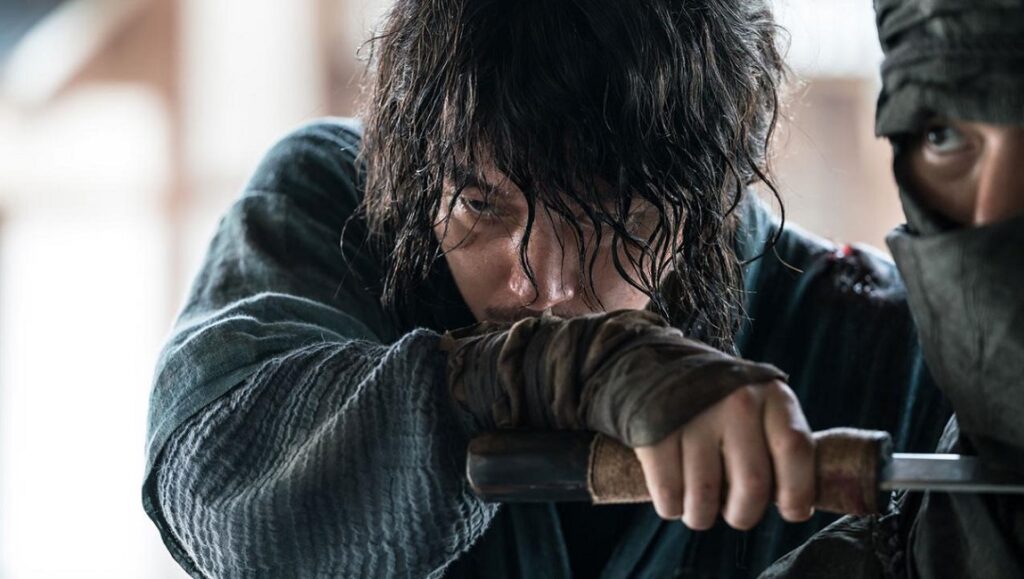The Swordsman is hamstrung by weak direction that has no idea how to shoot its otherwise well-choreographed action set pieces.
The disgraced and retired warrior at the center of Choi Jae-hoon’s The Swordsman is a cipher. Given the slightest bit of backstory and played by Jang Hyuk with only the barest emotion, Tae-yul is defined by two things: fatherhood and his poor eyesight. His blindness isn’t total and does not factor into much of the film’s narrative in a concrete way, so it might be best understood as simply a literal halfway reference to the Zatoichi series. Call Tae-yul “The Nearsighted Swordsman,” then. He is, typically, a man of great skill and little personality who is called back into action when his daughter is taken to be a servant to the local lord and put into the warpath of invading Qing forces. There is some political intrigue and historical specificity to this story about the Qing invasion of Joseon, but given the film’s title, set pieces, and supporting cast, including the great Joe Taslim as its villain, it’s fair to say that the draw here is the action.
Unlike the blink-and-you’re-dead chanbara of the Zatoichi saga, The Swordsman’s action leans more toward modern, drawn-out clashes of steel that aim to show off flashy choreography over anything else. Unfortunately, Choi’s direction isn’t up to that specific task, and those hoping for another hard-hitting classic in the Joe Taslim canon might be disappointed to find value placed on fluidity of individual motion rather than of clarity and verve. Choi shoots most fights over the shoulder, constantly obscuring the work of at least one of the combatants, and the action itself is overedited, rarely showing the entirety of any movement in a single shot. Among action films, The Swordsman is far from the worst offender when it comes to choppy editing, but individual shots hint at legitimately strong fight choreography that the cuts routinely cannot sell. What’s worse is that when Choi does employ a single-take action sequence, it’s not only gratingly ostentatious, but so digitally-assisted as to appear weightless and resemble nothing so much as a video game cutscene. The CG blood doesn’t help.
But it’s the tantalizing setup that makes the quality of The Swordsman’s swordplay disappoint. When Taslim shows up about thirty minutes in, he embodies swaggering menace. He’s not doing anything new, and the role is, like so much of this film, underwritten, but it’s impossible to watch anything else when he’s on screen, threatening nearly everyone he meets with political power and sheer brute force. It’s classic villain stuff, making the character at once eminently hateable and wonderfully compelling. That Choi doesn’t let him off the leash for most of the film would seem to be to its credit. Anyone in the audience aware of what Taslim can do, even if they’ve only seen him kicking Tyrese’s ass in Fast and Furious 6, should be willing to wait patiently to see him pick up a sword, and Choi capably seeds anticipation throughout. The problem is that when that moment comes in the finale, the fight between Jang Hyuk and Taslim has the same issues as the rest of the film’s set pieces, now magnified by seeing one of the world’s best martial arts stars effectively neutered by lackluster filmmaking. In this fight, maybe more than anywhere else, the choreography is so obviously well-staged and performed, but as elsewhere, it’s rendered almost wholly ineffective by weak, unintuitive direction and an edit that doesn’t know how to show the profound abilities of the film’s performers.


Comments are closed.